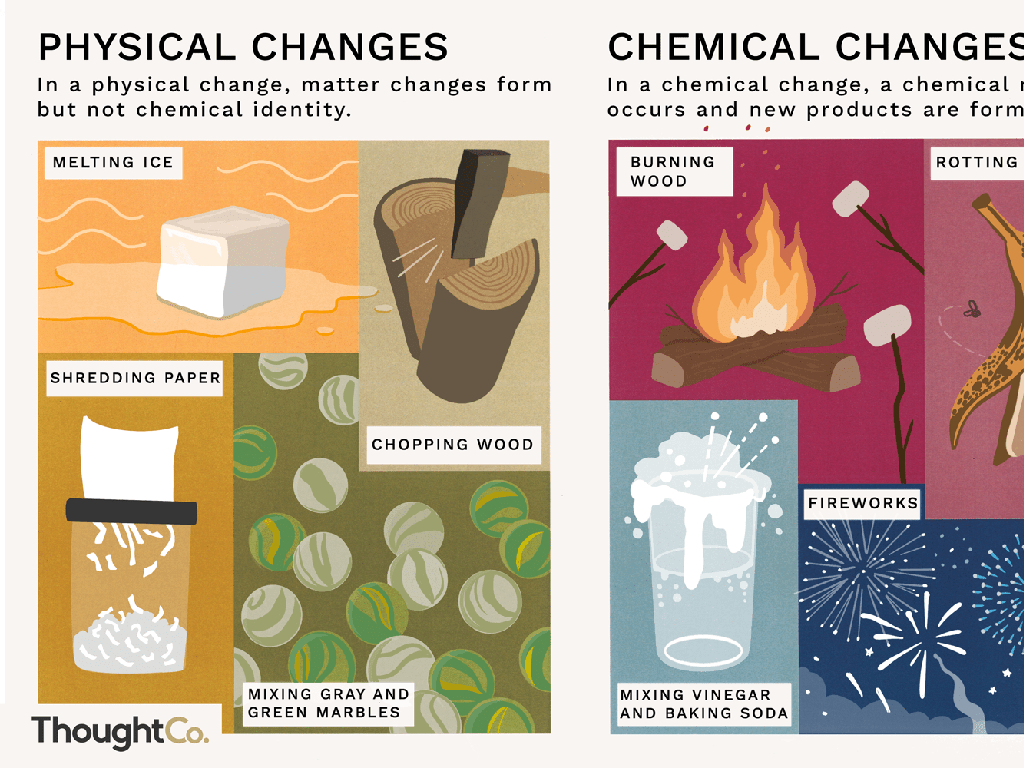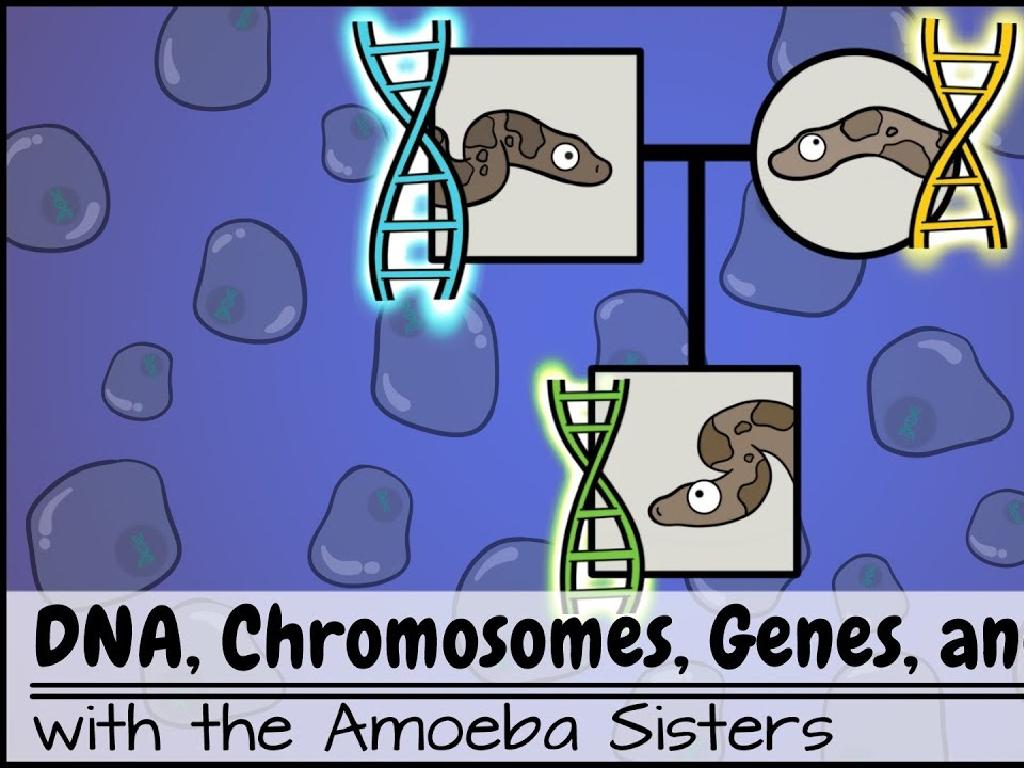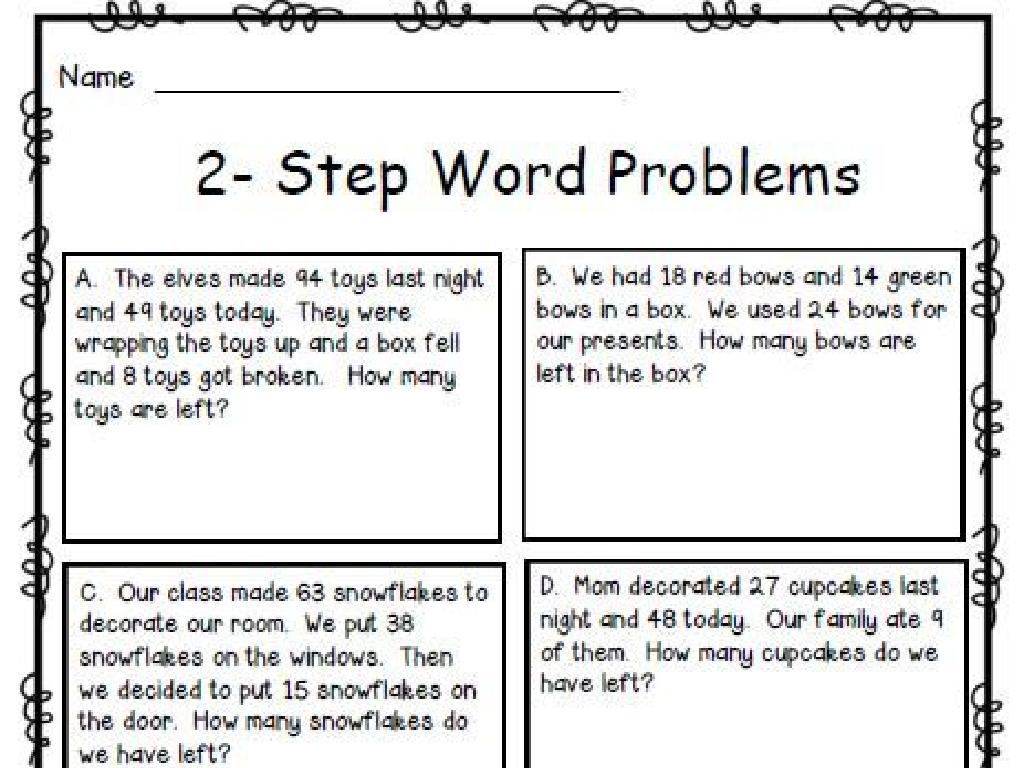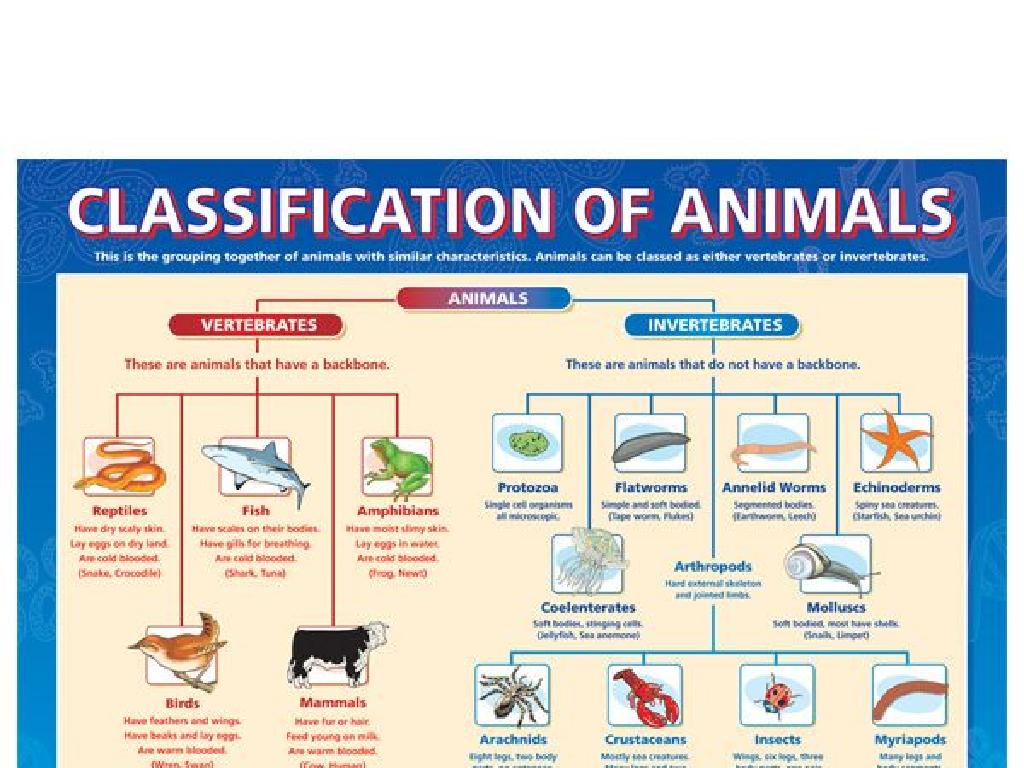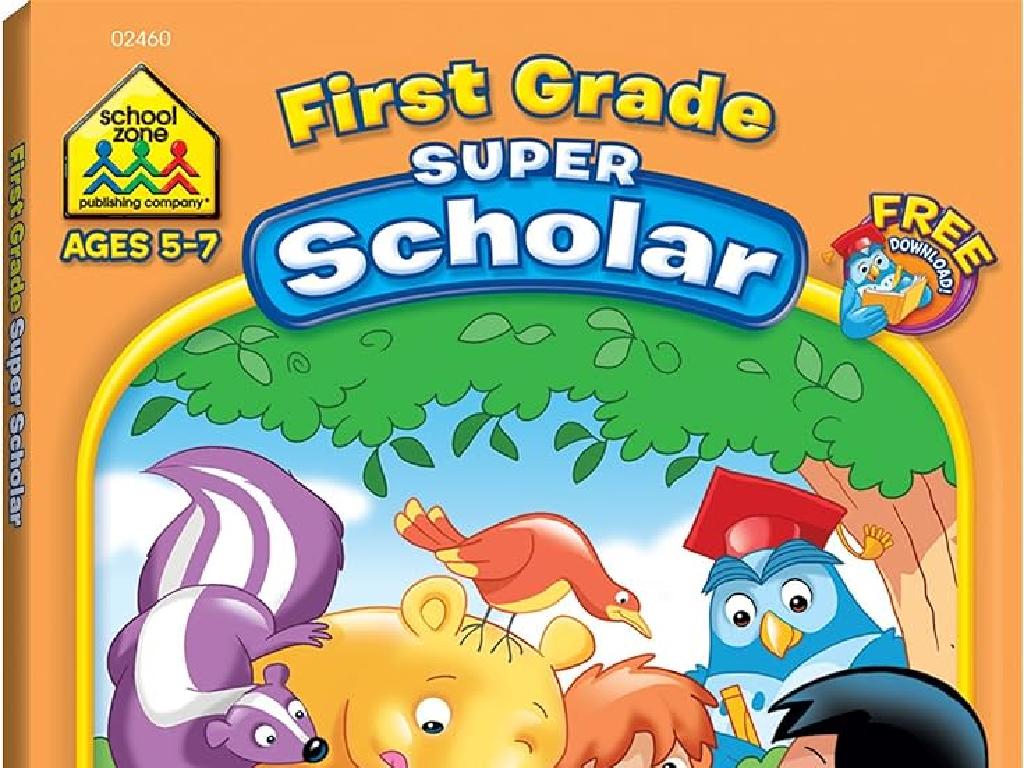Read A Calendar
Subject: Math
Grade: First grade
Topic: Days, Months, And Seasons
Please LOG IN to download the presentation. Access is available to registered users only.
View More Content
Welcome to Calendar Time!
– Greet the day with a ‘Good morning!’
– Today’s focus: Learning about calendars
– Calendars track dates and events
– Calendars show days, weeks, months, and special days like birthdays.
– They help us plan for fun times ahead
– Imagine planning a party; a calendar tells us when to celebrate!
|
This slide is designed to introduce first graders to the concept of calendars in a fun and engaging way. Start the class with a warm greeting and explain that calendars are tools we use every day to know what day it is and to look forward to exciting events in the future. Emphasize that calendars help us organize our time and remember important dates like holidays and birthdays. Encourage the children to think of events they look forward to and how a calendar helps them know when those events will happen. You can bring a large calendar to class and point out today’s date, showing how you can see what day of the week it is and how many days are left until a special event.
Understanding Calendars
– What is a calendar?
– It’s a chart for all the days in a year.
– Calendars show days, weeks, months
– See how days line up into weeks and months.
– Track important days with a calendar
– Mark special days so you don’t forget them!
– Examples: Birthdays and holidays
– Like when we celebrate and have parties.
|
Introduce the concept of a calendar to the students, explaining that it is a system for organizing days into weeks and months, which helps us know the date and plan for upcoming events. Emphasize the practical uses of a calendar, such as remembering significant personal and public events. Show them a real calendar and point out today’s date, this week, and this month. Highlight a birthday or a holiday on the calendar as examples of important days we keep track of. Encourage students to think of an important day they would like to mark on a calendar.
Days of the Week
– 7 days make a week
– Days named from Sunday to Saturday
– Start with Sunday, end with Saturday
– Practice saying the days
– Repeat the days as a class activity
– Sequence the days in order
– Arrange the days starting with Sunday
|
This slide introduces the concept of a week and its seven days to first-grade students. Begin by explaining that a week is made up of seven different days. Use visual aids like a calendar to show where each day is positioned within the week. Engage the class in a fun activity by saying the days of the week together, starting with Sunday and ending with Saturday. Emphasize the order of the days and encourage the students to repeat after you. As an interactive activity, you can have students arrange flashcards of the days in the correct order. This will help them to memorize the sequence of the days and understand the concept of a week as a cycle.
Months of the Year
– 12 months in one year
– Sing a song to remember
– We’ll learn a fun song to help us memorize the months!
– Each month has a unique name
– January, February, March, and so on.
– Months mark the seasons
– Winter, spring, summer, fall – the months tell us which one!
|
This slide introduces the concept of the months of the year to first graders. Emphasize that there are 12 distinct months, each with its own name. Introduce a simple and catchy song that helps students remember the order of the months. Explain that the names of the months are important for knowing the time of year and for understanding seasons. Activities can include singing the months of the year song, matching months with seasons, and having students share their favorite month and why. Encourage participation and make the learning process interactive and enjoyable.
The Four Seasons of the Year
– Year divided into 4 seasons
– Spring, Summer, Fall, Winter
– Each season’s unique weather
– Spring is rainy, Summer is hot, Fall is cool, Winter is cold
– Seasons last about 3 months
– Roughly each season transitions every 3 months
|
This slide introduces the concept of seasons to first graders, helping them understand the division of the year into four distinct parts. Explain that each season Spring, Summer, Fall (Autumn), and Winter has its own typical weather patterns and lasts for approximately three months. Use a calendar to show how the months of the year correspond to each season. Encourage students to think about what they observe during each season, such as changes in the weather, plants, and activities they can do. This will help them relate the concept of seasons to their own experiences and understand the passage of time throughout the year.
Reading a Calendar
– A calendar’s daily squares
– Find today’s date easily
– Look for the current month and find the number that matches today’s date
– Identify the day of the week
– Each square falls on a day, like Monday or Friday
– Plan for upcoming events
|
This slide introduces first graders to the concept of a calendar. Explain that a calendar is made up of squares, each representing a different day of the month. Show them how to locate today’s date on the calendar and determine what day of the week it is. Use a real calendar to demonstrate this, pointing to the squares and days as you explain. Encourage the children to talk about what they do on different days of the week to make the connection between their routine and the calendar. Also, discuss how they can use a calendar to look forward to special events like birthdays or holidays.
Finding Special Days on a Calendar
– Symbols and colors for special days
– Look for hearts, pumpkins, or flags that mark holidays
– Locate holidays and birthdays
– Birthdays may be marked with cake or balloon symbols
– Find a special day each month
– Choose any day that is important to you or your family
– Share your special day with the class
|
This slide is aimed at helping first graders recognize symbols and colors on a calendar that indicate special days such as holidays and birthdays. Teachers should explain that different symbols or colors can represent different events, and these can vary depending on the calendar. Encourage students to look for familiar symbols like hearts for Valentine’s Day or pumpkins for Halloween. Ask them to find and mark a special day in each month, which could be a holiday, a family member’s birthday, or any day they consider special. In the next class, give each student a chance to share their special day and explain why it’s important to them. This activity will help students become familiar with the calendar and understand how it can be used to recognize and plan for special events.
Using a Calendar: Marking Important Days
– Calendars track days and events
– Marking special days with stickers
– Use stickers to highlight birthdays, holidays, etc.
– Today’s date is special
– Find today’s date and understand its uniqueness
– Practice marking today’s date
|
This slide introduces students to the concept of using a calendar to keep track of important days such as birthdays, holidays, and other special events. Encourage the children to bring their own calendars to class and provide them with stickers. Guide them to find today’s date on the calendar and place a sticker on it. This activity will help them understand the practical use of a calendar and how to identify and mark significant dates. It’s a hands-on approach to learning about days, months, and seasons, and it will also enhance their ability to recognize and sequence dates. Prepare to assist students who may have difficulty locating the date and explain the significance of today’s date in the context of the week, month, and year.
Class Activity: Create Your Calendar!
– Make a calendar for this month
– Draw and color the days
– Mark today’s date
– Decorate with your favorite season
– Is it winter, spring, summer, or fall?
|
This activity is designed to help students understand the concept of calendars and the passage of time. Provide each student with a blank calendar template for the current month. Guide them to fill in the dates and draw symbols representing the days of the week. Help them identify and circle today’s date. Encourage creativity by allowing them to decorate their calendars with drawings or stickers that represent their favorite season, such as snowflakes for winter or flowers for spring. This will also serve as an opportunity to discuss the characteristics of different seasons. Possible activities: 1) Marking birthdays, 2) Highlighting holidays, 3) Noting important school events, 4) Drawing weather symbols for each day.

